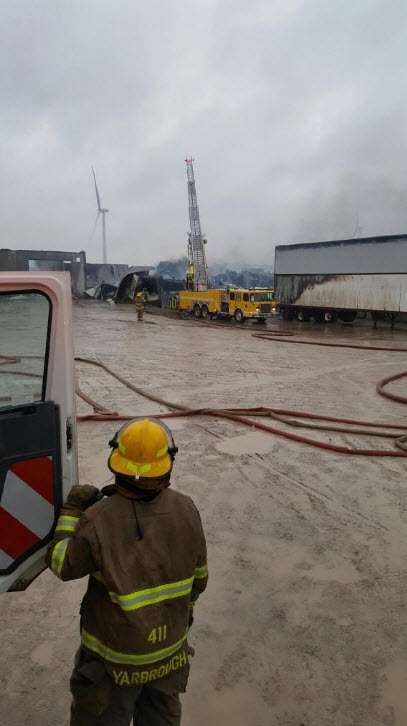Fire began early Tuesday morning
By Diego Flammini
Assistant Editor, North American Content
Farms.com
A fire destroyed a potato processing plant near Shelburne, Ont. early Tuesday morning.
The fire broke out at Tupling Farms Produce around 1:30 a.m. By the time firefighters from the Mulmur-Melancthon Fire Department arrived on scene, the 45,000 square-foot facility had collapsed.
“The flames were probably about another 100 feet in the air,” Mulmur-Melancthon Fire Chief Jim Clayton told 680 News. Nearly 1,000 skids inside the building fueled the fire.
Additional firefighters from Shelburne, Dundalk, Clearview, Rosemont and Adjala Tosoronito were brought in to help fight the blaze. A total of 50 firefighters and six tanker trucks were required.

Firefighters on scene.
Photo: Brad Lemaich/Twitter
Firefighters managed to get the fire under control by 9 a.m. Tuesday morning, according to reports.
“This is a steel building so the steel is on top of all the equipment inside,” Clayton told the Orangeville Banner. “We are just now moving all that out and trying to get into the hot spots.”
Clayton told the Orangeville Banner the building is a complete loss and damage is estimated between $3 and $4 million.
The Ontario Fire Marshal is being called in to investigate. The fire isn’t being treated as suspicious and the cause is still unknown.

Photo: Carl Hanstke/680 News
No injuries have been reported.
Farms.com has reached out to Tupling Farms Produce and the Mulmur-Melancthon Fire Department for updates on the situation.